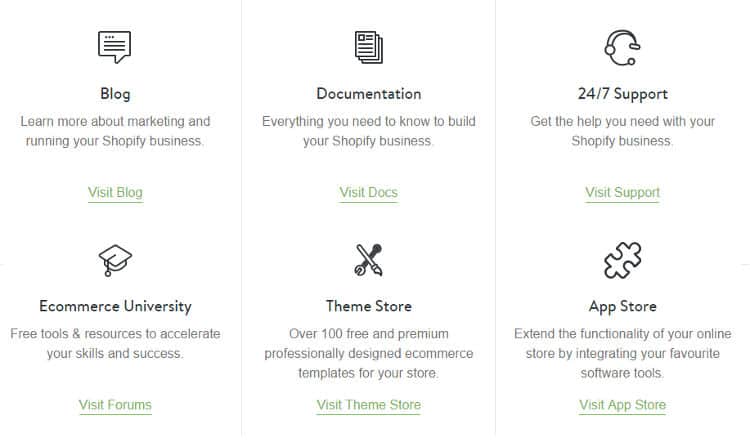
It’s hard to run a business. You know that. And most entrepreneurs gleefully embrace this fact. The reality of it, however, can still give you goose bumps.
Think about this: Amazon has been in business more than two decades now and it still doesn’t make much in terms of profit.
While investors have undying love for the company, it barely scratches the surface of net gains. Meanwhile, it expands, offers free shipping, buys new businesses, and adds more products to its seemingly endless shelves. According to an article by Meagan Clark and Angelo Young on ibtimes.com, the online retailing behemoth recently reported $17 billion in sales but with a $41 million loss.
Meanwhile, Twitter is something everyone uses and its future is still uncertain (waiting for its advertising model to work). In the year 2011, Sprint Nextel, AMR, Sears, and MGM resorts were all losing money as Rick Aristotle Munarriz noted on Daily Finance.
Why are we discussing businesses losing money here? What has this got to do with blogging and landing pages? Now, these are large businesses. They have attractive stock prices and investors love them. Yet, these companies barely make money. What can a small business do? How does a small business hope to make a sustainable profit given a situation like this?
While there is no magic formula, a great piece of advice is “keep your expenses down and go smart”. Make use of resources best suited to lean businesses. The giants cannot adapt fast. But you can! Use content and digital marketing to your advantage; use blogging in combination with landing pages.
Here’s why it’s a lethal combination that holds its own over other free and paid options.
PPC + Landing Pages Works but it’s Expensive
Phil Frost of MainStreet ROI explains why AdWords could prove to be expensive for your business.
Don’t get me wrong. PPC is easy, quick, and gets you results. It’s highly targeted advertising and with much lower risk than other paid channels or traditional advertising. It is just that you would have to know how to do it right.
Phil points out that the default settings on AdWords are built to make you lose money. Second, not all businesses fully understand how AdWords works and they don’t go much beyond pointing simple ads to their homepages. Third, most firms do not have a framework or a checklist to work with Adwords. Finally, organizations don not always track clicks from campaigns to see if this works in tandem with their business goals (if at all they have them clearly defined).
There is a lot at stake here. If you have the budget, you can certainly do PPC with landing pages. It is just not as straightforward as you might think, though. For one, putting up ads on Google or Bing and then waiting for traffic to come in only to convert is not a one-time process. You would start with segmentation, move on to geographic targeting, adding and removing keywords, creating ad copy, assets, and message matching. You would then have to optimize your landing pages, test frequently, and then go back to work on your ads again.
It does not end. So even with a budget, you still need to have the expertise and embrace learning curve.
Blog Posts Provide Content, Landing Pages Trigger Action
If you have to spend resources, why not do it with blog posts and landing pages instead of PPC? Your budget spend is reduced, and you have more room to experiment.
That’s not the only thing in favor of blog posts and landing pages. Blog posts are informational. They provide context to your readers. When you make a relevant offer with a blog post, your chances of conversion are a lot higher than an ad with a few characters and a landing page that shows up from nowhere and only has a hope of matching the ad message.
For instance, see this WordPress Handbook for first time users. This is an excellent collection of resources for WordPress beginners, but you can’t expect users to access it in a browser all the time. As a result, it can be forgotten after a while. Giving it away an eBook or in a PDF format could get WPKube an email subscription while the PDF stays longer on the subscribers’ devices.
Some companies go even further to create landing pages, which are themselves doorways to more information instead of making any direct offers. Shopify, for instance, has a resource doorway to starting a retail business, leading potential customers to take action, with all options taken care of:

More Toom To Explain
How many times have you heard the phrase “Let me explain…”? You have heard it because it is common, and it often works. Salespeople use it all the time. People who have vested interested in your vote use it relentlessly. If you are a marketer or a business owner, so should you.
But when ads and updates have character limits, how much convincing can you possibly do? What if the prospect wants to know more? Your ad cannot explain so much to a prospect. If a prospect had to click on an ad, go to a landing page, figure out further details about your services or products, and then come back to signup as a lead, your paid advertising is not really doing justice to your budget, is it?
Meanwhile, a blog post can already be a pre-emptive explanation. A landing page with an offer directly related to the blog post can boost your conversions sky high.
Knowledge + Trust = Better Conversions
When you blog, you are letting your heart out with a voice. Your customers get to know the real you. Names have faces and your writing has a voice. This is as personal as it can get. Customers feel that there are real people behind a business.
From an advertising perspective, this beats any ad served by technology. It beats anything automated. It also beats any hard-sell tactic.
Landing pages, of course, are a means to an end, leading your potential customers from “reading and knowing and trusting” mode to a more active “take action now” mode.
That is why a combination of landing pages with offers highly relevant to the topic of a blog post makes tremendous sense. It is no accident that companies like HubSpot, QuickSprout and Unbounce use it all the time. For example, HubSpot includes a free resource with a CTA at the end of every blog post:
Wrapping it Up
We always believe that no one method or channel is a permanent bet. The best kind of digital marketing is usually a mix of strategies, tactics, and marketing channels. It is also about tweaking, experimenting, testing, and picking what works.
It is not just PPC, SEO, social media, or email marketing. The best marketing strategy is a combination of all of these. This is why we call it the “Marketing Mix.”
Are you using blog posts to drive traffic to your landing pages? Are you making offers your readers cannot refuse? Please share your content marketing tactics with us, and let us know what is working for you and what is not.












